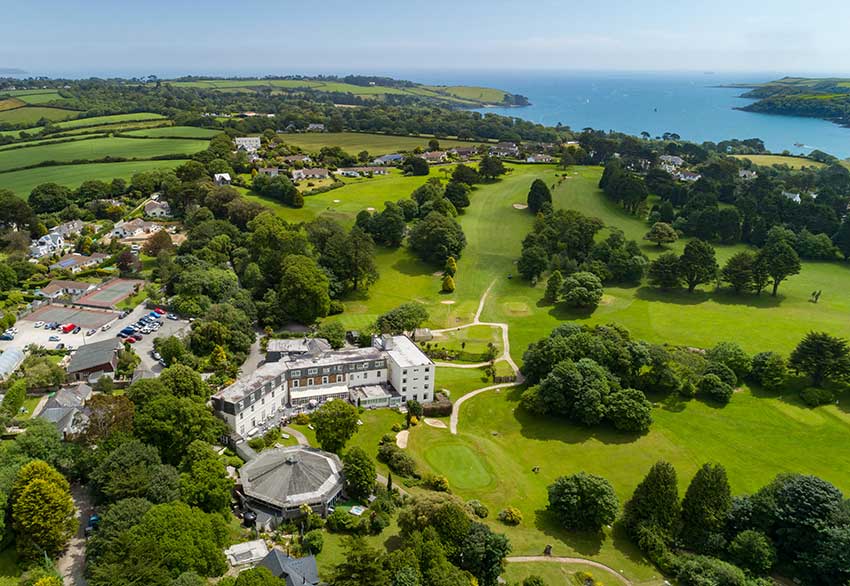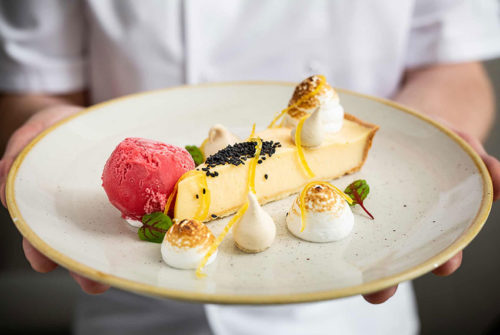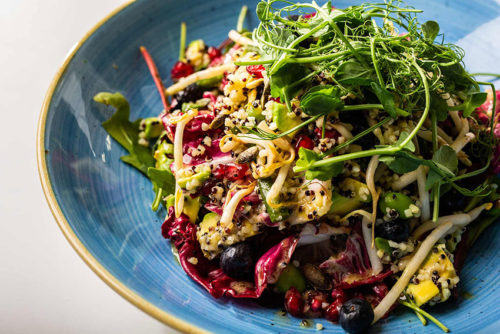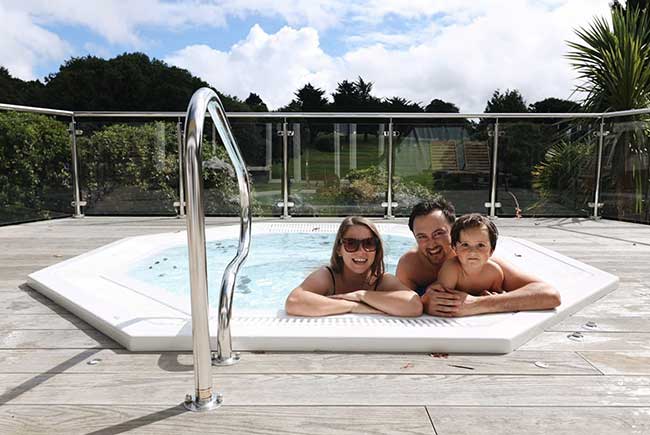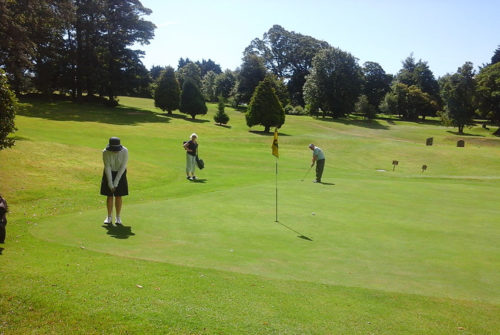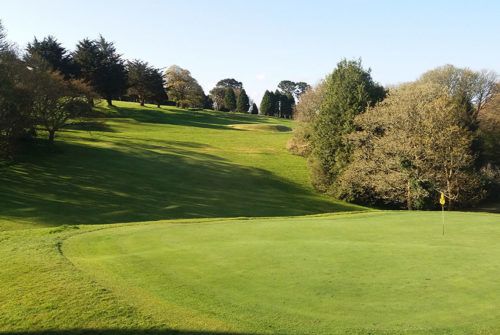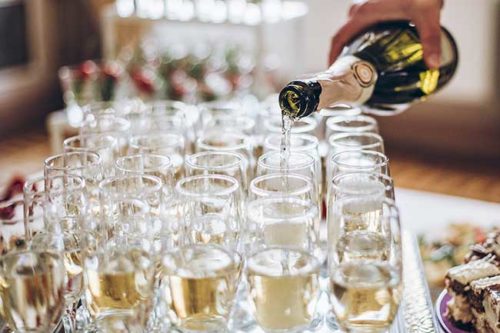News from Budock Vean
Discovering Daphne du Maurier’s Cornwall
In the summer of 1934 Daphne du Maurier spent a night on her yacht anchored in Frenchman’s Creek on the Helford River. This experience, bobbing about on the calm waters of that silent creek, was to inspire her classic novel of the same name about a French pirate captain and his love for the local woman, Dona, Lady St Columb.
Du Maurier used the people and places of Cornwall as a source of inspiration for her books again and again. Despite not having been born here she was to become one of our most famous and critically acclaimed authors, and until her death Cornwall was very much her beloved home.
We’re very lucky at Budock Vean to have Frenchman’s Creek close by. Guests at the hotel and day visitors can visit the creek on a boat, SUP or kayak trip from the hotel’s main foreshore. The trips run daily from April to October (or longer if we get long, lingering summers!)
The beautiful countryside and coastline, Cornwall’s unique atmosphere, history and legends undoubtedly fed and nourished Daphne Du Maurier’s writing, set the tone and became the backdrop for many of her bestselling books. She wrote:
“I walked this land with a dreamer’s freedom and with a waking man’s perception – places, houses whispered to me their secrets and shared with me their sorrows and their joys. And in return I gave them something of myself, a few words passing into the folk-lore of this ancient place.”
Daphne Du Maurier had begun visiting Cornwall with her family as a child and in 1926 her parents purchased a little waterside holiday home at Bodinnick called ‘Ferryside’. It was in this house that she began working on her very first book, The Loving Spirit, which was also her first novel set in Cornwall.
Many years later, however, it was a late afternoon walk at Gribbin Head between Fowey and Polkerris that would change her life. From the heights of that hill with its distinctive red and white painted daymark Du Maurier spotted Menabilly, a run-down country house owned by the Rashleigh family, hidden in the trees.
The next morning, before the sun was even up, she set out to find it, pushing her way through undergrowth and brambles to reach the house.
“I paused, stung by the beauty of that first pink glow of sunrise on water but the path led on and I would not be deterred. Then I saw them for the first time – the scarlet rhododendrons. Massive and high they reared above my head, shielding the entrance to a long smooth lawn. I was hard upon it now, the place I sought . . . My house of secrets. My elusive Menabilly.”
The house had been left empty for many years but after much persuasion the Rashleighs finally agreed to let Daphne and her family lease it. They moved in at Christmas in 1943.
But Menabilly was always more to the writer than just bricks and mortar, she wrote:
“Perhaps it is wrong to love a block of stone like this, as one loves a person. It cannot last. It cannot endure. Perhaps it is the very insecurity of the love that makes the passion strong. Because she is not mine by right. The house is still entailed and one day will belong to another.”
She lived at Menabilly for the next 26 years and it was a constant source of inspiration, appearing in several of her books. But it was also a retreat for her, somewhere where she could devote herself to her work without distraction, she wrote 16 of her novels on an old typewriter in a hut that she had built in the garden.
Menabilly most famously features as Mandalay, the slightly unnerving setting for her most famous book, Rebecca, but the ancient house had many secrets and strange local legends attached to it that found their way into Du Maurier’s work too.
Originally built in 1596 Menabilly was nearly destroyed during the Civil War and during restoration work on the house in 1824 the skeleton of a young man had been found in a small hidden room at the base of a buttress. Daphne was captivated by the strange story and in December 1944 she wrote to Mary Coate, a local historian and author of Cornwall during the Civil War, to ask if she had any more information.
“I am very anxious to write a novel on Menabilly during that period, the sacking of the house etc . . . I can of course, write a completely fictitious tale about the house and inmates of that period but it seems a great pity not to reconstruct what really happened. . . A skeleton was found here in about 1820, dressed in cavalier clothes, walled up in a secret room (since bricked up and impossible to find) and family tradition has it that the skeleton was that of a young Grenville, who was hiding here and could not escape. This is exciting but vague to my mind and it seems to me very odd that the Rashleigh family should have fled from the house leaving a friend in a secret room . . . I am so anxious to write the truth about what happened in those days.”
The tale of the skeleton became an integral and moving part of the plot of her Civil War novel, The King’s General, which she researched meticulously and which also featured a number of real characters, incidents and places from the Cornish history of that period.
But it was not just Menabilly that featured in her writing, a portrait of Rachel Carew that Du Maurier saw on a visit to Anthony House, near the Tamar River, became the seed of the character that would become Rachel Ashley in her 1951 novel, My Cousin Rachel.
She was also a keen walker and loved to sail, spending many happy hours exploring Cornwall’s hidden corners and waterways from her yacht, such as the Carrick Roads and the Helford River … and we know how she feels, we love it too. Please do ask for walking tips so you can explore the area on foot next time you’re with us, it’s view after view!
“A stranger, coaxing his boat up-river in a sudden windless calm casts anchor with a yawn beside pool or creek, then lolls by the tiller, too idle to row ashore. Peace prevails. The tide ebbs. The gently wooded slopes on either side of him that seemed at first sight to touch the water’s edge appear more distant . . .”
The wild landscape of Bodmin Moor became the backdrop for another of her famous books, Jamaica Inn, published in 1936. While out riding on the moors one winter Daphne and a friend became hopelessly lost in thick fog. Eventually, increasingly fearful and tired, they decided to let the horses have their head and see if they could find their way. The animals took them to the warmth of Jamaica Inn and the writer spent a happy few hours soaking up the atmosphere of this old coaching inn, apparently listening to some tall tales from the locals at the bar.
Combining this experience with the many stories of ghosts and smuggling she had heard during her time in Cornwall the book began to take shape. Though she is said to have later regretted the effect that the success of Jamaica Inn had on the real place, she never lost her admiration for the moors.
“The wanderer who is fond of solitude can wander anywhere . . . and lose himself forthwith, turning, after he has walked barely half a mile to open country, to see no sign of human habitation, nothing but bare brown moor as far as the eye can reach, rising in the distance to frowning tors and craggy rocks . . .”
One of her last novels, The House on the Strand, features the area around her final home in Cornwall, Kilmarth near Polkerris, where she lived after she had been forced to leave her beloved Menabilly in 1969.
Given all these wonderful connections it seems fair to say that for her many fans Cornwall is as memorable a character in her work as Mrs Danvers or Joss Merlyn.
On a rough day in April 1989 Daphne asked to be taken back to Pridmouth Cove, below Gribbin Head, where the cottage that was the inspiration for the boathouse in Rebecca still stands, to watch the waves crash onto the beach. She died just three days later.
DDM novels set in Cornwall:
Frenchman’s Creek
The Loving Spirit
Rebecca
Jamaica Inn
The King’s General
My Cousin Rachel
Castle Dor (novel started by Sir Arthur Quiller Couch and finished by DDM)
The House on the Stand
Locations to visit:
Frenchman’s Creek – setting for the novel where the pirate’s ship was anchored
Helford River – setting for Frenchman’s Creek and favourite of DDM
DDM Literary Centre in Fowey
Fowey & Polruan – setting for The Loving Spirit and Castle Dor
Bodinnick – where you can see Ferryside
Pridmouth Cove – featured in Rebecca
Gribbin Head – where DDM was walking and saw Menabilly for the first time
Polkerris – near DDM’s final home, Kilmarth
Kilkhampton Church – the church close to Stowe, home of the Grenville family, mentioned in The King’s General
Killigarth – features in The King’s General
Castle Dore – the ancient Iron Age castle outside Fowey.
Indian Queens – mentioned in Castle Dor
Tywardreath – thought to be the beach where the smuggler’s gather in Jamaica Inn
Jamaica Inn – this pub is now a hotel and has a small museum covering the history of the inn and the surrounding moors.
Altarnun – features in Jamaica Inn
Rough Tor – features in Jamaica Inn
Anthony House – where the portrait of Rachel Carew hangs
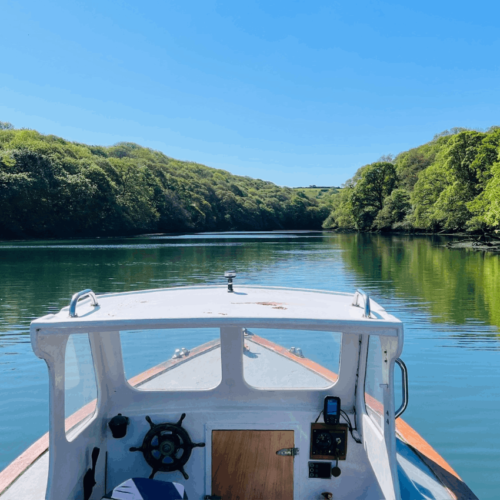
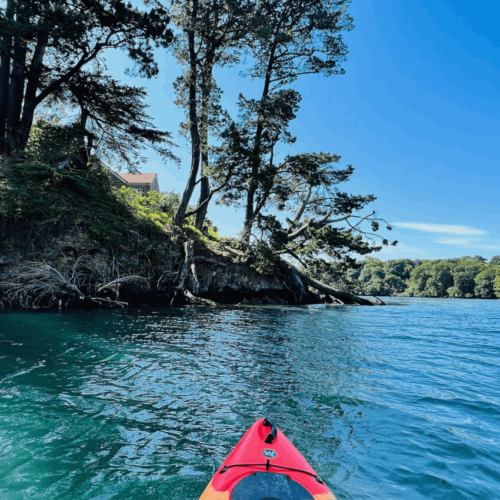
Frenchman’s Creek Photo Credit: Koru Kayaking & Helford River Cruises

